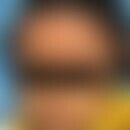Synonym(s)
HistoryThis section has been translated automatically.
In 1866, the British ophthalmologists Laurence and Moon described a clinical picture in which four persons in one family were diagnosed with retinitis pigmentosa, who also had paraplegia, hypogenitalism and mental retardation .
In 1920, the French physician Bardet described a clinical picture composed of RP, polydactyly, obesity, and hypogenitalism. The Prague pathologist Biedl added debility to this clinical picture.
In 1925, Solis-Cohen and Weiss summarized the cases published up to that time and called it Laurence- Moon-Bardet-Biedl syndrome.
In the meantime, the Bardet-Biedl syndrome is assigned to the group of cilia diseases (ciliopathies). The ciliopathies are characterized by a broad clinical spectrum with overlaps and smooth transitions between different ciliary diseases.
DefinitionThis section has been translated automatically.
Laurence-Moon-Bardet-Biedl syndrome is a complex, hereditary malformation syndrome from the group of ciliopathies. The syndrome is characterized by multiple malformations caused by mutations on different chromosomes or gene loci.
You might also be interested in
Occurrence/EpidemiologyThis section has been translated automatically.
The prevalence of the disease varies between isolated, consunguineous (Bedouin and Newfoundland - 1:13,500 and 1:16,000) and other populations (North America and Europe - 1:140,000 and 1:160,000).
EtiopathogenesisThis section has been translated automatically.
Mutations in at least twenty-one different genes (BBS1-BBS21) are associated with the disease.
BS1 is caused by mutation in a gene on chromosome 11q13 (209901);
BBS2 (615981), by mutation in a gene on 16q13 (606151);
BBS3 (600151), caused by mutation in the ARL6 gene on 3q11 (608845);
BBS4 (615982), by mutation in a gene on 15q22 (600374);
BBS5 (615983), by mutation in a gene on 2q31 (603650);
BBS6 (605231), by mutation in the MKKS gene on 20p12 (604896), mutations which also cause McKusick-Kaufman syndrome (236700);
BBS7 (615984), by mutation in a gene on 4q27 (607590);
BBS8 (615985), by mutation in the TTC8 gene on 14q32 (608132);
BBS9 (615986), by mutation in a gene on 7p14 (607968);
BBS10 (615987), by mutation in a gene on 12q (610148);
BBS11 (615988), by mutation in the TRIM32 gene on 9q33 (602290);
BBS12 (615989), by mutation in a gene on 4q27 (610683);
BBS13 (615990), by mutation in the FMD1 gene (609883) on 17q23, mutations that also cause Meckel syndrome-1 (249000);
BBS14 (615991), due to mutation in CEP290 gene (610142) on 12q21, mutations in which also causes Meckel syndrome-4 (611134) and several other disorders;
BBS15 (615992), caused by mutation in the C2ORF86 gene (613580), which encodes a homolog of the Drosophila planar cell polarity gene 'fritz' on 2p15;
BBS16 (615993), due to mutation in the SDCCAG8 gene (613524) on 1q43, mutations which also cause senior loken syndrome-7 (613615);
BBS17 (615994), due to mutation in LZTFL1 gene (606568) on 3p21;
BBS18 (615995), caused by mutation in the BBIP1 gene (613605) on 10q25;
BBS19 (615996), by mutation in the IFT27 gene (615870) on 22q12;
BBS20 (617119), by mutation in the IFT74 gene (608040) on 9p21;
BBS21 (617406), by mutation in the C8ORF37 gene (614477).
ClinicThis section has been translated automatically.
Complex syndrome of malformation characterized by the following main symptoms:
- mental retardation
- retinopathy (Beetz 2013)
- Obesity
- Polydactyly
- malformations of the kidneys
- Hypogenitalism in male patients (Risler 2008).
Other symptoms with low frequency (secondary symptoms):
- Anal atresia
- Anosmia
- Ataxia
- Asthma
- Hypertension
- diabetes mellitus
- progressive sensorineural hearing loss
- heart malformations
- tall, giant, short stature
- hyperlipidemia (elevated cholesterol, triglycerides and lipoproteins)
- Hypodontia
- kyphoscoliosis
- liver enlargement, liver dysfunction, liver fibrosis
- Crohn's disease (inflammatory disease of the small and/or large intestine)
- Hirschsprung's disease or megacolon congenitum
- Pigmentnaevi
- Psychological problems: anxiety, depression, compulsive behavior, affective and autistic disorders, psychosomatic diseases
- Rib and vertebral dysplasias (malformations)
- Sleep apnea
- spina bifida
- Speech delay, speech deficits
- Urogenital dysplasias (malformations of the urinary and genital tracts)
- Tooth position anomalies
Differential diagnosisThis section has been translated automatically.
LiteratureThis section has been translated automatically.
- Treatment consists of regular multidisciplinary surveillance (Forsythe 2013).
- Bartels H (2013) Spatial damage of the kidney in the sonographic image: textbook and atlas. Springer Verlag 121
- Beetz R et al (2011) Pediatric urology in clinic and practice. Thieme Verlag 256
- Berwanger B et al. (2002) Alström syndrome: a differential diagnosis to Bardet- Biedl syndrome. A differential diagnosis to Bardet- Biedl- syndrome. Monatsschrift Kinderheilkunde (150) 58 - 61
- Braune K (2017) Characterization of ALMS1 (Alstrom syndrome 1) transcripts in Hodgkin lymphoma cells. Dissertation for the degree of Doctor of Medicine (Dr. med.) submitted to the Medical Faculty of Martin Luther University Halle-Wittenberg.
- Danne T et al. (2016) Obesity, diabetes and dyslipidemia in childhood. Walter de Gruyter Publishers 5
- Deeg K H et al (2014) Ultrasound diagnostics in pediatrics and pediatric surgery. Thieme Verlag 864 - 866
- Engelskirchen R et al. (2006) Asphyxiating thoracic dysplasia (Jeune syndrome): successful multi-stage correction. Monthly Journal of Pediatrics (12)
- Entezami M et al. (2002) Sonographic diagnosis of malformation: teaching atlas of fetal ultrasonography. Selected syndromes and associations. Thieme Publishers 245
- Forsythe E et al (2013) Bardet- Biedl- syndrome. Eur J Hum Genet 21, 8 - 13. https://doi.org/10.1038/ejhg.2012.115.
- Ganten D et al (2013) Monogenic inherited diseases 2: handbook of molecular medicine. Springer Verlag 291 - 292
- Gimpel C et al. (2019) Imaging diagnosis in children with renal cysts and cystic kidneys. Monthly Journal of Pediatrics (167) 530 - 538.
- Hegele A et al. (2015) Urology: intensive course for continuing education. Thieme Verlag 117 - 121, 124 - 129
- Heinrich M et al (2019) Pediatric surgery: basic knowledge and practice. W. Zuckschwerdt Publishers 192 - 193.
- Herold G et al (2021) Internal medicine. Herold Publishers 630 - 634
- Hofmann V et al. (2005) Ultrasound diagnostics in pediatrics and pediatric surgery. Georg Thieme Publishers 439, 453 - 454
- Kasper D L et al (2015) Harrison's Principles of Internal Medicine. Mc Graw Hill Education 1850 - 1856
- Kasper D L et al (2016) Harrison's internal medicine. Georg Thieme Publishers 2279 - 2285
- Keller C K et al (2010) Practice of nephrology. Springer Verlag 43 - 51, 53 - 54
- Kemper M et al. (2020) S2k-guideline renal cysts and cystic kidney disease: renal cysts and cystic kidney disease in children. AWMF Register No. 166 / 003
- Knaup K X et al (2019) Autosomal dominant tubulointerstitial kidney disease (ADTKD). The Nephrologist. DOIhttps://doi.org/10.1007/s11560-019-0318-y
- Korinthenberg R et al (2009) Neuropediatrics: evidence-based therapy. Urban and Fischer Publishers 19
- Kuhlmann U et al. (2015) Nephrology: pathophysiology - clinic - renal replacement procedures. Thieme Verlag 64, 653 - 665
- Lerchbaumer M H (2018) "The Bosniak classification of renal cysts in contrast-enhanced ultrasound (CEUS) comparative to computed tomography and magnetic resonance imaging" Inaugural dissertation for the degree of Doctor medicinae (Dr. med.) submitted to the Medical Faculty Charité - Universitätsmedizin Berlin.
- Manski D (2019) The urology textbook. Dirk Manski Publishers 231 - 236
- Michels G et al. (2010) Clinic manual internal medicine Springer Verlag 504 - 505.
- Risler T et al (2008) Specialist nephrology. Elsevier Urban and Fischer Publishers 372 - 373, 752 - 754
- Schmidt F et al. (2006) Rosiglitazone long-term therapy in patients with Alström- Hallgren syndrome. Diabetology and Metabolism 1 (3) 168 - 172.
- Sohn C et al (2013) Ultrasound in gynecology and obstetrics. Thieme Verlag 243 - 244
Incoming links (5)
Adiposo-hypogenital syndrome; Alström-hallgren's syndrome; Bardet-biedl syndrome; Laurence moon biedl syndrome; TRIM-proteinfamily;Outgoing links (4)
Cushing's syndrome (overview); Dystrophia adiposogenitalis; Prader-willi syndrome; TRIM-proteinfamily;Disclaimer
Please ask your physician for a reliable diagnosis. This website is only meant as a reference.




